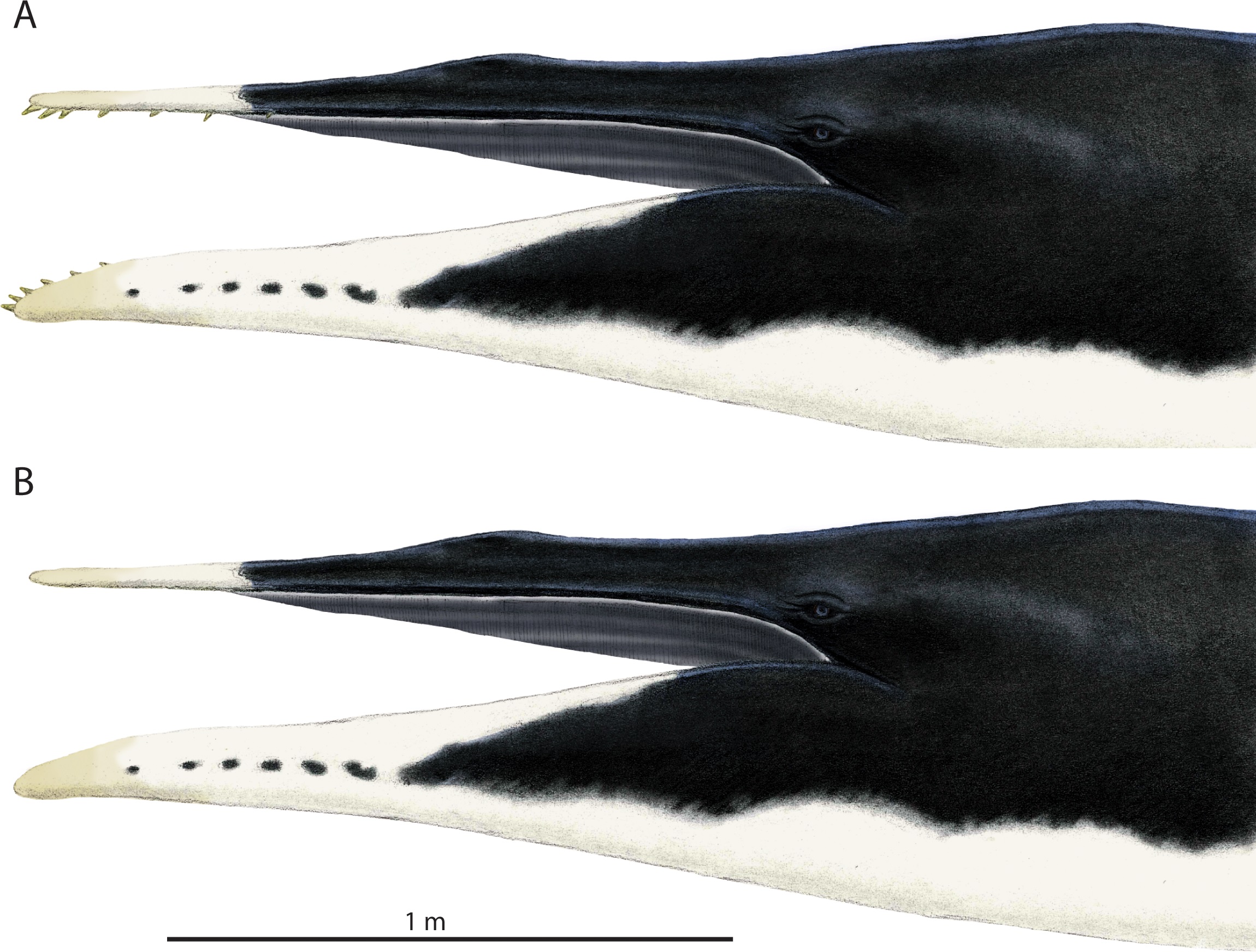Eomysticetid on:
[Wikipedia]
[Google]
[Amazon]
Eomysticetidae is a family of extinct mysticetes belonging to Chaeomysticeti (toothless mysticetes). It is one of two families in the basal chaeomysticete clade Eomysticetoidea (the other being Cetotheriopsidae).
 Eomysticetids are united by the following combination of primitive and derived characters relative to more advanced chaeomysticetes (Balaenomorpha): zygomatic process without a supramastoid crest; reduction of the superior process of the periotic into a low ridge with anterior and posterior apices in medial or lateral view; blowholes situated ahead of the eyes; an elongated intertemporal region with long parietal and frontal exposures on the cranial vertex; elongated nasals; large coronoid processes of the mandibles; flat rostrum; laterally bowed mandibles; absence of functional teeth; and large mandibular foramina.
Eomysticetids are united by the following combination of primitive and derived characters relative to more advanced chaeomysticetes (Balaenomorpha): zygomatic process without a supramastoid crest; reduction of the superior process of the periotic into a low ridge with anterior and posterior apices in medial or lateral view; blowholes situated ahead of the eyes; an elongated intertemporal region with long parietal and frontal exposures on the cranial vertex; elongated nasals; large coronoid processes of the mandibles; flat rostrum; laterally bowed mandibles; absence of functional teeth; and large mandibular foramina.
Description
 Eomysticetids are united by the following combination of primitive and derived characters relative to more advanced chaeomysticetes (Balaenomorpha): zygomatic process without a supramastoid crest; reduction of the superior process of the periotic into a low ridge with anterior and posterior apices in medial or lateral view; blowholes situated ahead of the eyes; an elongated intertemporal region with long parietal and frontal exposures on the cranial vertex; elongated nasals; large coronoid processes of the mandibles; flat rostrum; laterally bowed mandibles; absence of functional teeth; and large mandibular foramina.
Eomysticetids are united by the following combination of primitive and derived characters relative to more advanced chaeomysticetes (Balaenomorpha): zygomatic process without a supramastoid crest; reduction of the superior process of the periotic into a low ridge with anterior and posterior apices in medial or lateral view; blowholes situated ahead of the eyes; an elongated intertemporal region with long parietal and frontal exposures on the cranial vertex; elongated nasals; large coronoid processes of the mandibles; flat rostrum; laterally bowed mandibles; absence of functional teeth; and large mandibular foramina.
Taxonomy
There are seven genera of Eomysticetidae: ''Eomysticetus'', ''Matapanui'', ''Micromysticetus'', ''Tohoraata'', ''Tokarahia'', ''Waharoa'' and ''Yamatocetus''. Until the early 21st century, some of the known representatives of the family were thought to belong to then-wastebasket family Cetotheriidae, including '' Tokarahia lophocephalus'' and '' Tohoraata waitakiensis''. However, in the original description of ''Eomysticetus'', the similarities of ''"Mauicetus" lophocephalus'' to ''Eomysticetus'', although Sanders and Barnes (2002) stopped short of assigning ''"M." lophocephalus'' to Eomysticetidae. Subsequent studies confirmed the placement of ''"M." lophocephalus'' and ''"M." waitakiensis'' in Eomysticetidae.Paleobiology
As members of Chaeomysticeti, eomysticetids used their baleen plates to filter krill and other planktonic organisms. Although superficially similar to thalassotherian chaeomysticetes, their large mandibular canal indicates that they were incapable of lunge-feeding as in modern-day balaenopterids. A fatty pad on the mandibular canal suggests that eomysticetids could hear underwater.References
{{Taxonbar, from=Q19760078 Oligocene cetaceans Miocene cetaceans Aquitanian extinctions Baleen whales Chattian first appearances Prehistoric mammal families